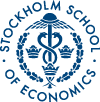No 360: A Flexible Coefficient Smooth Transition Time Series Model
Marcelo Medeiros () and Alvaro Veiga ()
Additional contact information
Marcelo Medeiros: Dept. of Economic Statistics, Stockholm School of Economics, Postal: Stockholm School of Economics, P.O. Box 6501, S-113 83 Stockholm, Sweden
Alvaro Veiga: Dept. of Electrical Engineering, Catholic University of Rio de Janeiro (PUC-Rio), Postal: Rua Marquês de São Vicente, 225, Rio de Janeiro, RJ, 22453-900 Brazil
Abstract: In this paper, we propose a flexible smooth transition autoregressive (STAR) model with multiple regimes and multiple transition variables. We show that this formulation can be interpreted as a time varying linear model where the coefficients are the outputs of a single hidden layer feedforward neural network. This proposal has the major advantage of nesting several nonlinear models, such as, the Self-Exciting Threshold AutoRegressive (SETAR), the AutoRegressive Artificial Neural Network (AR-ANN), and the Logistic STAR models. Furthermore, if the neural network is interpreted as a nonparametric universal approximation to any Borel-measurable function, our formulation is directly comparable to the Functional Coefficient AutoRegressive (FAR) and the Single-Index Coefficient Regression models. The motivation for developing a flexible model is twofold. First, allowing for multiple regimes is important to model the dynamics of several time series, as for example, the behaviour of macro economic variables over the business cycle. Second, multiple transition variables are useful in describing complex nonlinear behaviour and allow for different sources of nonlinearity. A model building procedure consisting of specification and estimation is developed based on statistical inference arguments. A Monte-Carlo experiment showed that the procedure works in small samples, and its performance improves, as it should, in medium size samples. Several real examples are also addressed.
Keywords: Time series; smooth transition models; threshold models; neural networks
40 pages, First version: February 9, 2000. Revised: April 29, 2004. Earlier revisions: February 10, 2000, February 10, 2000, February 15, 2000, February 15, 2000, May 7, 2000, June 7, 2000.
- Published as
- Marcelo Medeiros and Alvaro Veiga, (2005), 'A Flexible Coefficient Smooth Transition Time Series Model', IEEE Transactions on Neural Networks, vol 16, no 1, pages 97-113
Questions (including download problems) about the papers in this series should be directed to Helena Lundin ()
Report other problems with accessing this service to Sune Karlsson ().
RePEc:hhs:hastef:0360This page generated on 2024-09-13 22:15:05.

